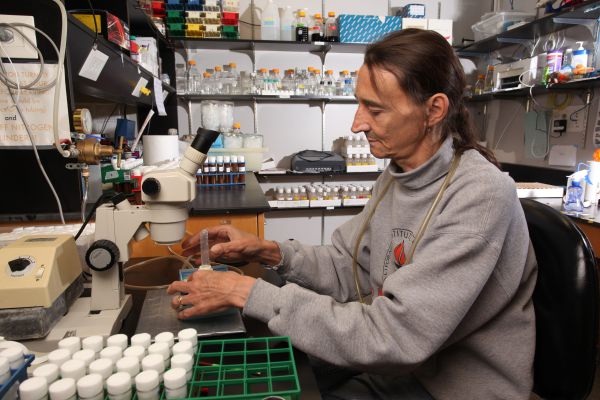We use Drosophila as a model system in which to identify and isolate genes homologous to humans, using the fly for experimental analysis of their basic functions.
Research
Our research program uses the fruit fly, Drosophila melanogaster, as a model to characterize the molecular changes that occur during aging and identify their biological significance. This program is driven by the need of the medical community to better understand the mechanisms of aging in order to develop interventions to keep individuals healthy and independent longer.
Teaching
Hands on rules.
Additional Information
Figure caption: The middle-age crisis GAL4 enhancer-trap is inserted in between two genes encoding peptidoglycan recognition proteins (PGR-LC and PGRP-LF). GAL4 expression is controlled by the same age-dependent regulatory sequences acting on the PGRP genes. Combined with a UAS-GFP transgene, this GAL4 enhancer-trap can be used to reflect in vivo the tissue-specific activation of immune-related genes at mid-life in Drosophila. The pictures show GFP expression in living flies at different ages (indicated as a percentage of the maximum life span). Past mid-life, GAL4 is activated in the abdominal oenocytes (multiple patches). Therefore, the simple examination of the animal can be used as an indicator of innate immunity activation as well as an indicator of physiological age.
Topics
- Biochemistry
- Genetics
- Molecular biology

